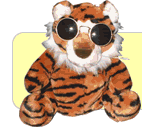I have been hunting these down for a while but to no avail. On each side of the car, below the rear seat, at about where the rear suspension mounts are, are two seperate rattles driven by road surfaces. They are coming from below the floor (confirmed by trusty sidekick lying on boot floor as we drove around). Various testing done with bits in the rear removed, so we know its not the seat, seat belt mounts, boot lid. I've been underneath to check the petrol tank bolts are done up. They are fairly high pitched, around 10-20 Hz. They don't sound like serious heavy duty suspension clonk like what you'd expect from worn bushes.
Any ideas????
Any ideas????




